The Florida Scrub Jay is Florida’s only endemic bird and one of only fifteen bird species endemic to the United States. It is believed that there are approximately 8,000 Florida Scrub Jays alive and their numbers are decreasing at a rate of approximately 10% every ten years. As a result of their rarity and decreasing numbers they have been listed as Vulnerable, which means that unless conservation action to restore their dwindling habitat is taken they will become threatened.
As the Florida Scrub Jay is only found in Central Florida, the bird tends to be a celebrity among birders who travel long distances to see one. In fact, Deb & I met a couple from Sweden who had travelled to Florida last month just to see a Florida Scrub Jay. It was our pleasure to take them to an area where Scrub Jay’s were nesting and they were able to check another species off their life list. An interesting characteristic of the Scrub Jay is their inquisitive, social nature that renders them very tame. They readily land on your hand, shoulder or camera lens waiting to be fed a peanut. This comes as a complete surprise when you first encounter Scrub Jays as although they may be rare and difficult to find, when you do, they are instantly your best friends.
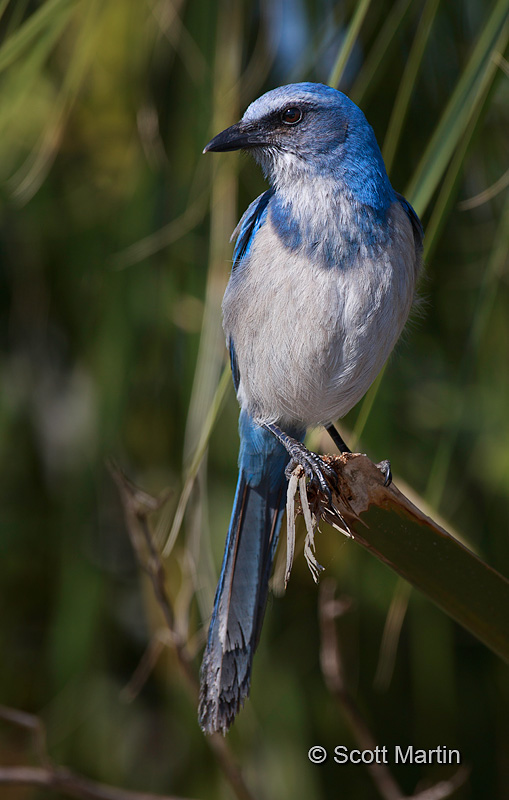
They do look similar to our Blue Jays and are about the same size as well.
Due to their friendliness and unique stature Florida Scrub Jays are among the most studied of all the birds. Consequently most seem to banded, much like we see with our Gray Jays in Algonquin Park. Scrub Jays normally have three or four bands, a silver metal band with an ID # from the US Fish & Wildlife Service, plus two or three coloured plastic bands which indicate when and where the bird was banded. The banding of birds allows researchers to monitor the movements of birds within their range as well as record other data. The next image shows a banded bird.
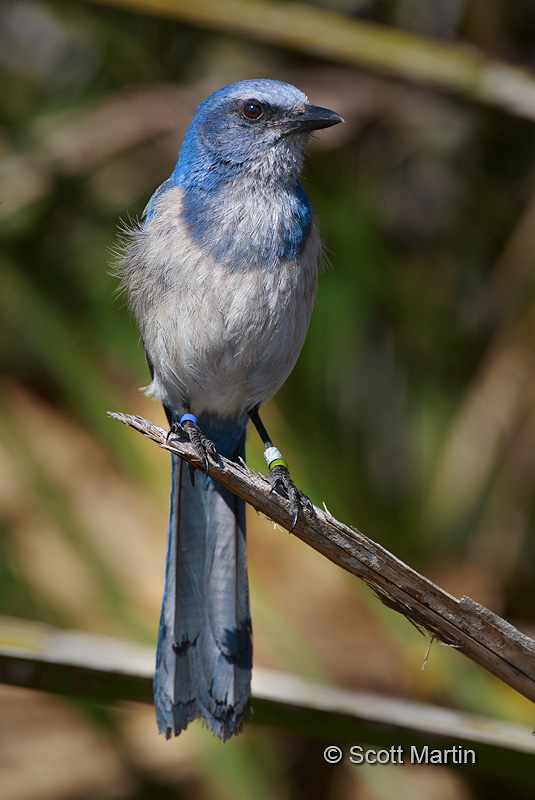
The next profile shot illustrates their lack of wing colour and detail as typical with our Blue Jays.
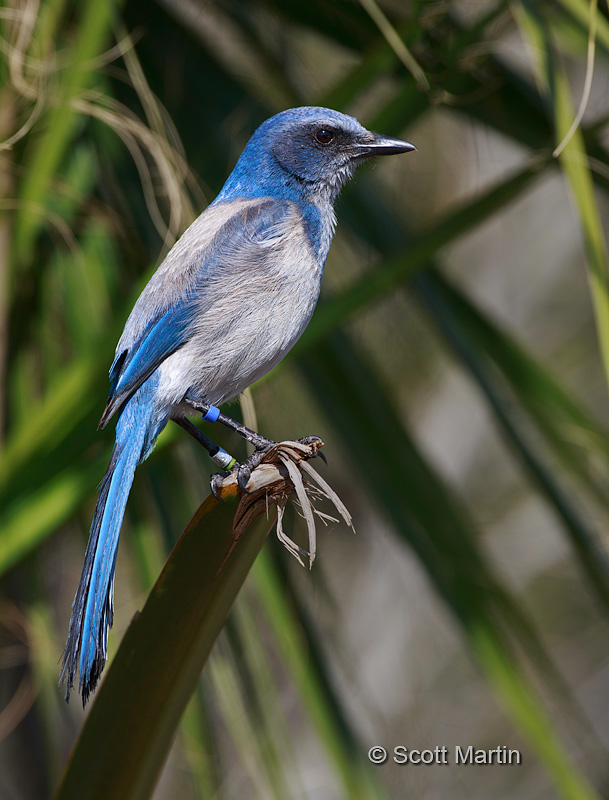
.
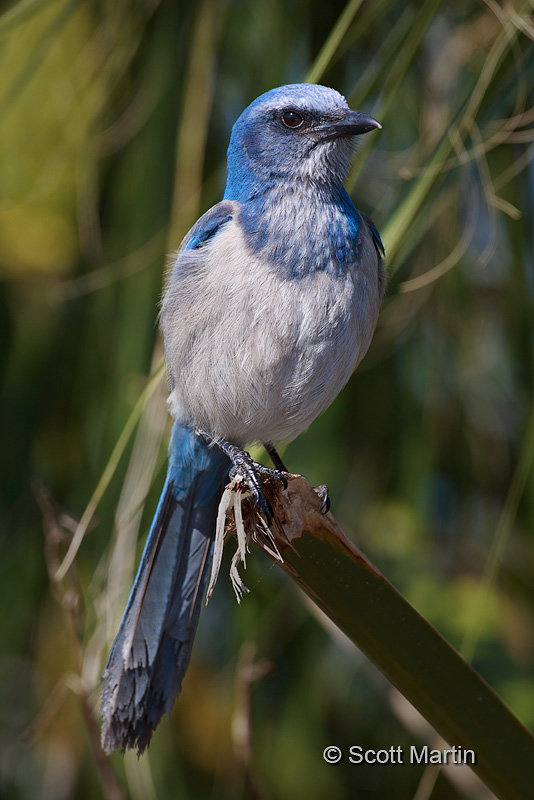
It was hard to get a good shot of the back of Scrub Jay, so please excuse the busy back ground in this next image.
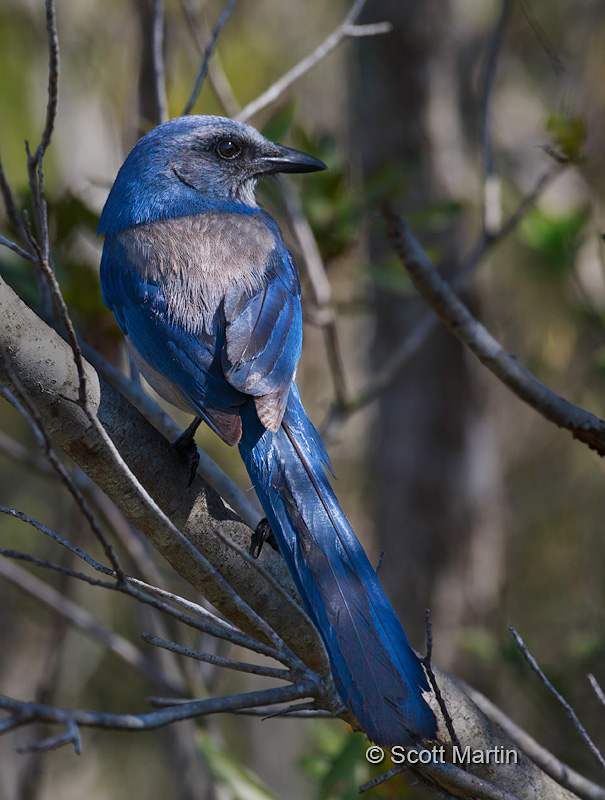
Other Scrub Jays can been viewed in the Jays Ravens & Crows Gallery
From a photographic perspective, getting bird images that are more than just snapshots requires controlling as much of what the final image will look like as possible. For me that involves thinking about the back ground as much as the object, which is not an easy thing to train yourself to do. When was the last time you looked through your viewfinder and thought as much about what was in the back ground as you did the object? If you are like me, you may not have thought about the back ground at all! A few suggestions to help improve your results next time out are; look for the least cluttered back ground as possible, look for uniform light density throughout (avoid bright spots, especially ones that encroach on the object), try to get as much distance between the object and back ground as possible which helps blur the back ground and isolate the object. Don’t forget to move around with your feet or zoom with your lens to help accomplish the above suggestions. In terms of thinking about the object, next to ensuring proper focus, exposure and light direction, for me the most important thing is to avoid shadows on the bird. This is not always possible due to the nature of bird photography however it is always the ideal. Have a another look at the second image in this post and see how distracting the shadow on the tail is…almost ranking up there with the bands! The last image is greatly hampered by the cluttered background (which is exacerbated by the lack of separation between the object and back ground) and that half of the tail is under a shadow, however as is often the case, it was the only frame that clearly showed the back of the bird, no matter how hard I tried to get that ‘keeper’ shot of the back.
So next time, try to think about the things that will help move your results from snapshots to photographs, but never think so much about the results that you don’t enjoy your time out with your camera!
All the above images were taken with a Canon 5D MkIII and 500mm lens using a Jobu monopod and Jobu Jr. 3 gimbal head.

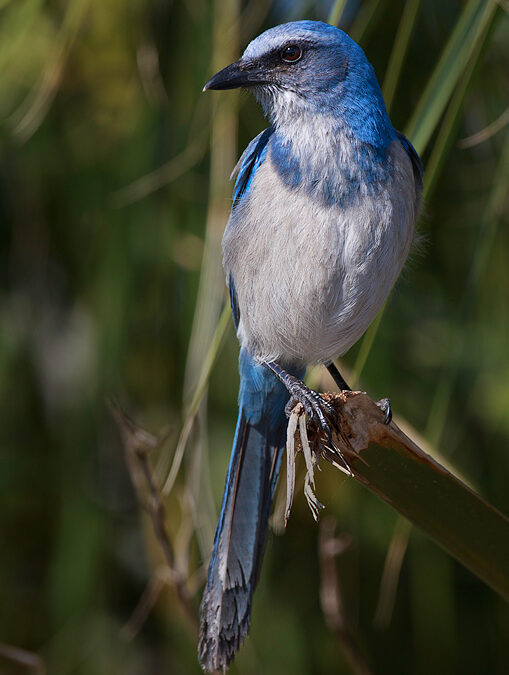
Terrific series Scott. We enjoyed our time with the Scrub Jays when we were last in Florida and I look forward to doing so again. My quest this time will be to try and get images as great as these.
Thanks Arni. They are so friendly it makes them fun to photograph…. Florida’s version of our Algonquin Park Gray Jays 🙂